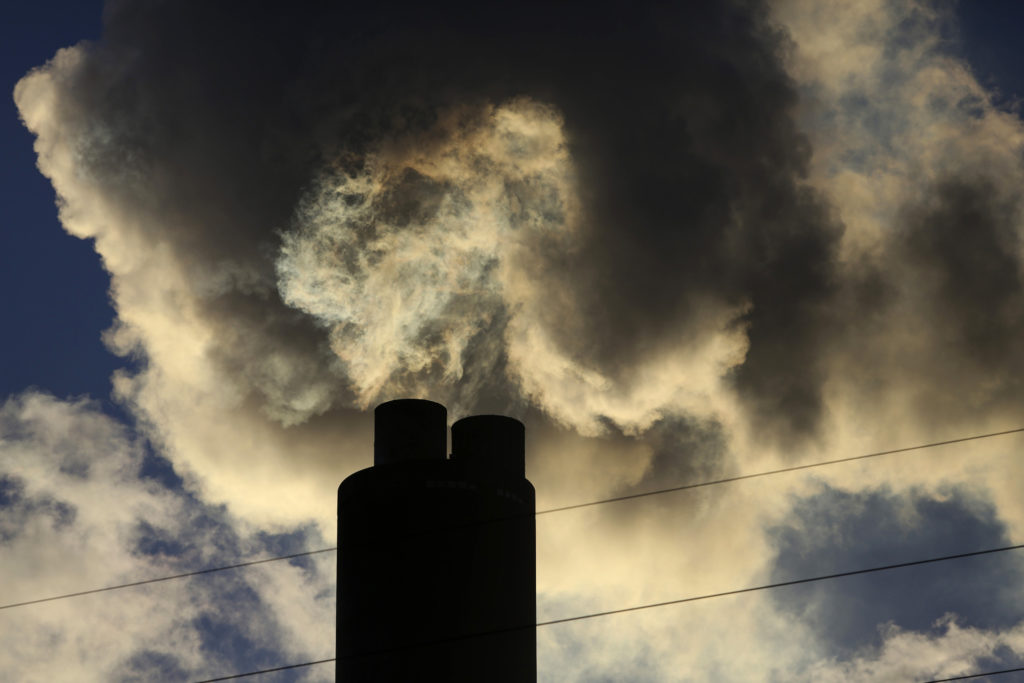
The world’s largest carbon emissions market is shuddering from risks stemming from Britain’s plan to leave the European Union.
The U.K. would drop out of the EU Emissions Trading System in the event of a no-deal exit. A temporary extension for talks on an agreed departure would open questions about how Britain will participate in the system over the next few months.
The cap-and-trade system covers almost 13,000 factories, power stations and airlines. It’s meant to reduce greenhouse gases by gradually cutting allowances big polluters buy to cover their emissions. Following is a primer for how events may unfold:
Q. What’s the U.K.’s role in the current system?
A. The U.K. had the fourth largest volume of emissions in the market in 2017, after Germany, Italy and Poland, so its exit will shrink the market substantially for the first time since it began in 2005. London is the base for ICE Futures Europe, the biggest exchange handling carbon contracts.
Q. What would happen once Britain leaves the EU?
A. There are two scenarios. If Britain leaves with a deal, then existing rules will probably be mostly extended by two years. In that period, the U.K. plans to decide whether Britain wants to remain linked to the market or create its own alternative climate measures, potentially its own market or tax. If there’s no deal, U.K. companies will crash out of the emissions trading system on the day that Brexit becomes effective, which currently means March 29.
Q. What’s the biggest risk to holders of allowances or those who have bought EU carbon contracts as an investment?
A. A no-deal Brexit could cause prices to drop. U.K. factories, power stations and airlines would have allowances bought for compliance in the system they no longer need, since the last year they needed to obey the market’s rules would be 2018. Some British emitters with regional operations may instead transfer allowances for use in other parts of Europe, limiting those sales.
Q. What is the EU doing to prepare?
A. To protect its market, the European Union has suspended the distribution of U.K. allowances starting this year. It has the ability to label any permit sold by Britain, distinguishing them in the market. That could make any U.K. allowances issued with a mark trade at a discount. At the moment, this point is academic. The European Commission has halted Britain’s ability to sell or hand out allowances starting Jan. 1 until the day after a formal exit deal is ratified. British polluters are supposed to hand in allowances to match 2018 emissions before the planned exit date of March 29.
Q. What has the U.K. response been?
A. Britain doesn’t want its securities marked as different from others in the market, so it agreed in 2017 to the earlier compliance date this year of March 15. On March 11, it decided to extend that to March 26 — three days before the current deadline for Brexit. The commission said that was short notice. Debate about when Britain will comply with market rules along with uncertainty about the direction of Brexit is unsettling the carbon market and signaling a growing mistrust among politicians about how the U.K. will manage relations with the 27 remaining EU member states.
Q. How are the rule changes impacting on business?
A. Because Britain can’t yet issue allowances for 2019, companies can’t use those certificates to comply with their 2018 greenhouse gas emissions. That takes away a a major financial benefit of the carbon market that companies enjoy across the rest of the union, and it’s exposed a few companies that didn’t plan for that risk. British Steel Ltd. faces a financial hit of 100 million pounds ($133 million) or more this month if the government is unable to secure a Brexit deal, two people familiar with the matter said in February.
Q. What happens next?
A. Once the U.K. decides when it’s to exit the EU, regulators can decide how and when Britain hands out and sells its 2019 allowances. Not knowing how many they will get makes it more difficult for emitters to plan. A key question is: if the withdrawal deal is secured during the next few days, can the U.K.’s free allowances for 2019 be handed out quickly enough so that emitters can use them to meet the March 26 deadline for 2018 compliance? Another is, will the U.K. hold an auction this month, adding to supply?
And the market isn’t waiting for an answer, since trading is continuing. On April 1, the day after what’s still potentially the weekend after Brexit, the European Commission will publish a data base that reveals the 2018 emissions for the factories, power stations and airlines covered by the market.
Recommended for you
